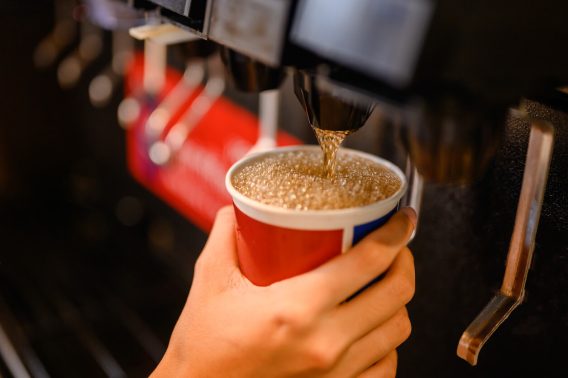Dangerous ‘Superbug’ Found in Southern California Soda Fountains
Editors carefully fact-check all Consumer Notice, LLC content for accuracy and quality.
Consumer Notice, LLC has a stringent fact-checking process. It starts with our strict sourcing guidelines.
We only gather information from credible sources. This includes peer-reviewed medical journals, reputable media outlets, government reports, court records and interviews with qualified experts.

A dangerous ‘superbug’ bacterium was found growing in Southern California soda fountains recently, raising public health concerns.
Pseudomonas aeruginosa, a deadly antibiotic-resistant pathogen, was among several bacteria found during a recent water survey in the eastern Coachella Valley. The area is known for its vast agricultural lands along with its struggle with water contamination. It is also home to many low-income Latino farmworkers and their families.
Researchers from Loma Linda University identified bacterial levels in soda fountains there that exceeded the drinking water standards set by the U.S. Environmental Protection Agency.
“We cannot say that soda fountain contamination is only in the eastern Coachella Valley,” Thomas Hile, a researcher affiliated with Loma Linda and the lead author of the study, told USA Today. “It’s a general problem that I believe is kind of overlooked.”
Hile and other researchers collected more than 70 water samples from places where eastern Coachella Valley residents might get drinking water, including tap water, soda fountains and water vending machines where people can fill up large jugs.
Water samples taken from soda fountain dispensers at fast food restaurants found bacteria that included salmonella, E. coli and deadly P. aeruginosa, all known to cause severe illness. P. aeruginosa is the same pathogen that was found earlier this year in contaminated EzriCare and Delsam Artificial Tears eye drops that killed four people and sickened many.
Researchers: Soda Fountains Host Dangerous Bacteria
Researchers found that plastic piping used to connect water vending machines and soda fountains were a breeding ground for biofilm, a slimy substance made of microorganisms that can stick to surfaces and be hard to remove. Filtration systems in the machines are “insufficient to prevent consumers from drinking contaminated water,” researchers wrote.
“This study reinforces the health risk of biofilms in water dispensers and the importance to develop surveillance and regulation that target water dispensers,” the study noted.
Despite the evidence in the Loma Linda study, it’s unclear how widespread the problem is. Joan Rose, a microbiologist and the Homer Nowlin Endowed Chair in Water Research at Michigan State University, told USA Today that the researchers’ findings were of concern. Rose is not associated with the study.
“It’s clearly an indicator that we need to do more investigations like this,” Rose said. “We just don’t know how big the threat is.”
Water Contamination Risks and Side Effects
Drinking contaminated water can have many risks and side effects. Harmful substances such as chemicals or microorganisms, toxic pesticides from agricultural runoff, or improperly treated water can cause drinking water supply contamination. Waterborne pathogens can also contaminate water.
Drinking contaminated water can cause many health problems, from gastrointestinal illnesses to neurological problems to cancer, depending on what is in the water. Waterborne diseases caused by pathogens are usually noticed quickly and can cause diarrhea, nausea, vomiting or other gastrointestinal symptoms. Severe cases can lead to dehydration and death.
In 2013 and 2014, there were more than three dozen water-related outbreaks that sickened more than 1,000 people and resulted in 124 hospitalizations and 13 deaths.